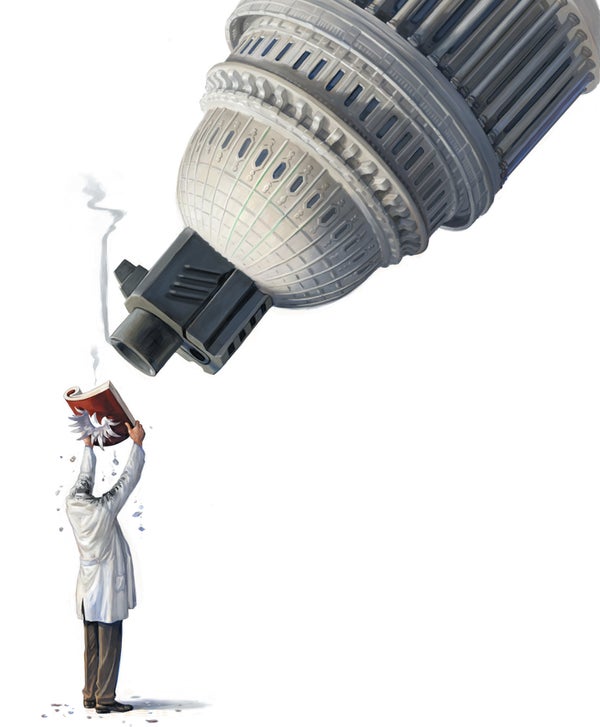Ernest Hemingway, Nobel laureate in literature, wrote A Farewell to Arms. David Hemenway, professor of health policy at the Harvard T. H. Chan School of Public Health, wishes CDC personnel could just mention arms. “Researchers, staff at the Centers for Disease Control, are afraid to say the word ‘guns’ or ‘firearms,’” Hemenway said on February 17 at a session on gun-violence research at the annual meeting of the American Association for the Advancement of Science (AAAS). The conference took place in Boston, famous for gun-related havoc since the Boston Massacre (which, unlike the Bowling Green Massacre, actually happened).
“Public health is underfunded relative to medicine in terms of research,” Hemenway noted. “Within public health, injury prevention is particularly underfunded. And within injury prevention, firearms research is the most underfunded for the size of the problem.”
According to Hemenway, on average in the U.S., more than 300 people get shot daily. A third of them die. “Since I graduated from college [in 1966], there have been more civilian deaths from guns in the United States than combat deaths on the battlefield in all the wars in United States history, including the Civil War and World War II.” (And, of course, the war that started brewing after the Boston Massacre.)
On supporting science journalism
If you're enjoying this article, consider supporting our award-winning journalism by subscribing. By purchasing a subscription you are helping to ensure the future of impactful stories about the discoveries and ideas shaping our world today.
“Twenty years ago [the CDC was] doing a tiny amount of funding for firearms research ... $2.6 million a year total,” Hemenway said. “This was too much for the gun lobby and Republicans in Congress, and they attacked the CDC. And now the CDC does no funding of firearms research. Zero.”
No official prohibition stops the CDC from offering such funding. But Hemenway says that CDC folks avoid even saying “guns” or “firearms” to keep out of congressional crosshairs: “The director of the CDC, of our major public health agency, we've had mass shooting after mass shooting in the United States, and what has he said? And I don't blame him ... not a single word. And for good reason. Because he knows if he says anything about guns, funding will be cut.” Talk about trigger warnings.
The National Institutes of Health also feels the chill of a congressional freeze-out. Hemenway talked about research that examined grants given by the NIH during a 40-year period. “How many deaths were from cholera, diphtheria, polio and rabies in the United States? And the answer was 2,000. How many research awards were given by the NIH during that period to cholera, diphtheria, polio and rabies: 486. During the same 40-year-period, how many people were shot in the United States with guns? The answer's four million. How many research awards were there about guns and gun issues? Three.”
By the way, the data on civilian deaths include suicide by gun. Studies show that the majority of such suicides depend on the easy accessibility of a firearm—most people don't simply switch to another method when a gun isn't around. Of course, we can never know what Hemingway (as well as a couple of people I knew personally) would have done without the presence of a handy gun.
Another group of researchers at the AAAS meeting who deal with some unfriendly feds are those trying to determine if cannabis can be good medicine. In fact, in the parts of the country where medical marijuana is legal, opioid deaths and prescription pain medication use are way down—so there's at least some evidence that pot seems to help manage pain.
But marijuana is still what is known as a Schedule I substance—the Food and Drug Administration does not recognize a legitimate medical use for it, so scientists have to jump through flaming hoops to get any to study.
“It can't come off of Schedule I to a different schedule until the traditional drug development work has been done, and I don't think the traditional drug development work [large phase III trials] really can be done while it's Schedule I,” said Ryan Vandrey of the Johns Hopkins University School of Medicine on February 19 at the AAAS conference. “It's a catch-22.”
And it's not likely to be uncaught any time soon, especially with Jeff Sessions as attorney general (he still was as we went to press, anyway). In April 2016 Sessions famously said, “Good people don't smoke marijuana,” which is so vacuously, reductively absurd as to render a retort unnecessary. Except for the one I saw on Twitter reacting to the Sessions quote: “True. I eat it.”
